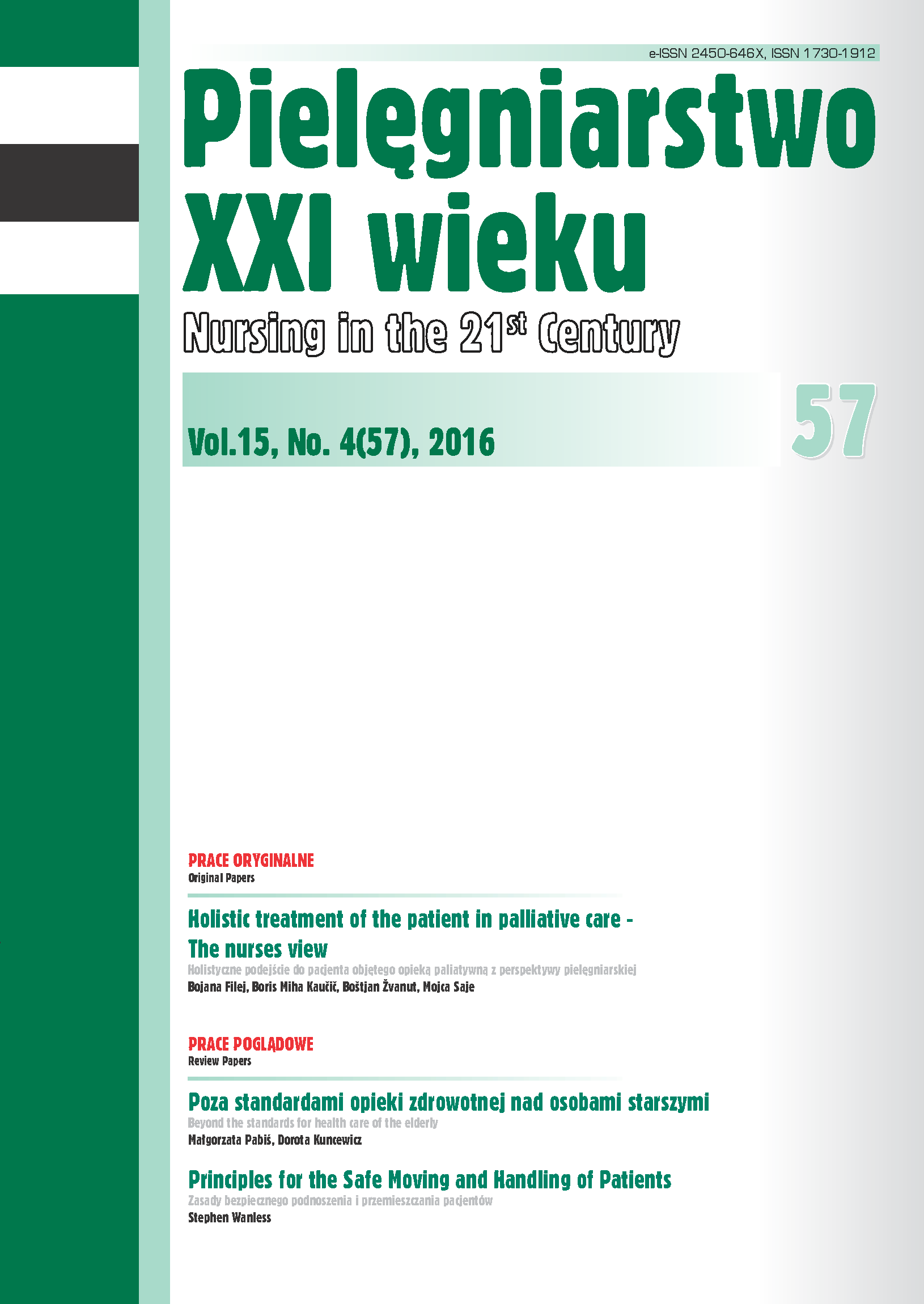The quality of life of patients with chronic pain, hospitalized in conservative treatment wards
DOI:
https://doi.org/10.1515/pielxxiw-2016-0033Keywords:
chronic pain, chronic diseases, quality of lifeAbstract
THE QUALITY OF LIFE OF PATIENTS WITH CHRONIC PAIN, HOSPITALIZED IN CONSERVATIVE TREATMENT WARDS
Introduction. Pain is one of the most frequent human ailment. Not not only is it the first and often the only symptom of ongoing disease process, but also a warning of impending danger. According to the European epidemiological studies, it is estimated that chronic pain occurs in 19% of the population. This means that within a year this condition is diagnosed in 7 million patients in Poland. Treatment of chronic pain is complicated due to the variety of its origin.
Aim. Influence of chronic pain in hospitalized patients on their daily quality of life.
Material and methods. The study included 80 patients with a chronic spinal pain syndrome. To evaluate the intensity of pain, the numerical scale (NRS), the verbal scale (VRS) and the abbreviated version of the McGill Questionnaire were used. To measure the quality of life, the SF-36 was used.
Results. The results of analysis of the collected material confirmed the impact of chronic pain on the quality of life of the hospitalized. Assessment of pain intensity decreased in the group of patients after one week of treatment. On the other hand, in assessing the overall perception of health, quality of life and its various dimensions, a difference between the two groups and the different stages of the study was observed. Own study confirms the equivalence of psychosocial factors modulating the level of pain and the quality of life.
Conclusions. There is a relationship between pain intensity and the level of quality of life as well as its individual components before and after the treatment in patients with chronic spinal pain. Some significant changes between the variables were separated in the accepted stages of the study among people with chronic pain.
References
1. Bocian R, Krawczyk K, Michalak A, Okraszewski J, i wsp. Jakość życia. Gin Prakt. 2009; 2: 33-37.
2. Białasik B, Muszalik M, Szewczyk MT. Ocena dolegliwości bólowych u chorych z owrzodzeniem kończyny dolnej. Pielęg Chir Angiol. 2007; (40) 150-157.
3. Doward LC, Mc Kenna SP. Defining patient-reported outcomes. Value in Health. 2004; 7(1):4-8.
4. Trojanowska A. Znaczenie badań nad jakością życia w medycynie. Zdr Pub. 2011;121 (1):99-103.
5. Farnik- Brodzińska M, Pierzchała W. Jakość życia i jej ocena u chorych na astmę. Alerg Astma Immun. 1997; 2(4): 203-206.
6. Baumann K. Jakość życia w okresie późnej dorosłości – dyskurs teoretyczny. Gerontol Pol. 2006; 14(4):165-171.
7. Kukielczak A. Rozwój zainteresowania w naukach medycznych badaniami nad jakością życia. Prz Epidemiol. 2012; 66: 539-545.
8. Panaszek B, Wojtkiewicz M. Możliwości oceny wpływu pokrzywki przewlekłej i obrzęku naczynioruchowego na jakość życia pacjentów. Post Dermatol Alergol. 2010; 27(4): 291-296.
9. Domżał TM. Ból przewlekły — problemy kliniczne i terapeutyczne. Pol Prz Neurol. 2008; 4 (1): 1-8.
10. Golec A. Psychologiczne metody leczenia bólu. Medycyna bólu. Warszawa: PZWL 2005; s. 499-507.
Downloads
Published
Issue
Section
License
Copyright (c) 2016 Authors

This work is licensed under a Creative Commons Attribution-NonCommercial-NoDerivatives 3.0 Unported License.




